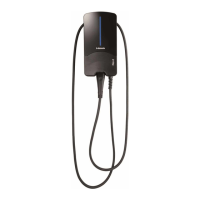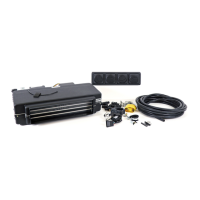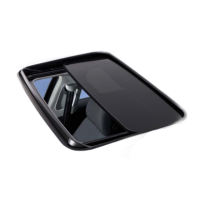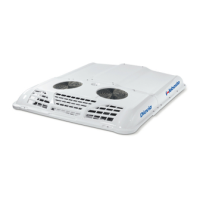Roof-top air-conditioning system CC4E Webasto Thermosysteme
Page 28 / 32
6.6. Troubleshooting
General
a) A systematic approach is advisable for troubleshooting. Appropriate action must be undertaken as
described below for faults of a general nature or when normal conditions are not obtained during
the pressure test.
b) Certain faults can only be located and remedied by skilled personnel using special tools.
c) If the compressor is damaged (e.g. defective valve plates) it is absolutely essential to replace the
expansion valve as a possible cause of the malfunction.
Cause of faults in the electrical system
The individual circuits must be systematically checked with the aid of the circuit diagram (see
Fig. 3.1) and the fault localized. Above all plug connections, switches, relays, etc., should be
checked for continuity.
The following possibilities must always be checked and excluded as a possible cause of the
malfunction:
– Defective fuses
– Corrosion of plug contacts
– Loose contact in plug connectors
– Wrong crimping on connector
– Corrosion on wiring and fuses
– Corrosion on battery poles
Cause of faults in the air-conditioning system
– Defective evaporator or condenser fan
– Contaminated or clogged air filters, evaporator or condenser fins
– Loss of refrigerant or refrigerant level in system too low
If the system is deactivated continuously, we recommend that it be checked by an authorized
workshop.
Refrigerant circuit
If faults arise in the refrigerant circuit, the system must be inspected and repaired by an authorized
specialist repairshop. Refrigerant must never be discharged into the atmosphere (refer to Section 8
of the regulation dated 6 May 1991 banning the use of CFCs and halones).
Cause of faults making it impossible to reach the required states during pressure tests
Divergences from the required state during pressure tests (chapter 6.8) may be due to the following causes.
These causes must be checked, the trouble located and defective components repaired or replaced.
High pressure gauge indication too high:
– Condenser air flow restricted
– Too much refrigerant
– Filter drier clogged
High pressure gauge indication too low:
– Not enough refrigerant (check viewglass)
– compressor speed too low (e.g. by slippage of V-belt)
– Compressor defective
Low pressure gauge indication too high:
– Expansion valve defective
– Compressor speed too low (e.g. by slippage of V-belt)
– Compressor defective

